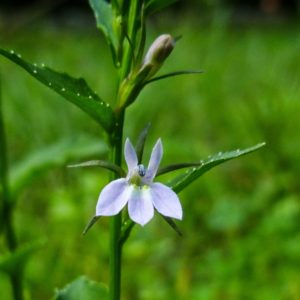
Lobelia
It is hard to understand addiction unless you have experienced it yourself. – Ken Hensley
![]()
Lobelia is also called “Indian tobacco” and has a long history of use as an herbal remedy for respiratory conditions such as asthma, bronchitis, pneumonia, and cough. Historically, Native Americans smoked lobelia as a treatment for asthma. In the 19th century, American physicians prescribed lobelia to induce vomiting in order remove toxins from the body. Because of this, it earned the name “puke weed.” It is a purgatory, it means that it makes you vomit if taken in larger doses.
![]()
Lobelia impacts neurotransmitter activity in a way that is similar to nicotine. The active ingredient, Lobeline, is a both a nicotine agonist and antagonist derived from an Indian plant “lobelia inflata.” Here's what that means:
The brain has neurotransmitter receptor cells that have been labeled 'nicotinic' receptors because they are stimulated by nicotine. Lobeline acts on these cells as an 'agonist,' which means that it binds to these cells and stimulates them in a similar way to nicotine. (The effects are not as strong as nicotine, however.) Because the drug is in effect 'parked' at the receptor sites on these cells, it also partially blocks nicotine from activating them, thereby reducing the effect of nicotine in the brain from smoking, and helping to reduce the 'reward' associated with smoking.
Interestingly, unlike nicotine, which is highly addictive, lobeline does not appear to be addictive. This may be because of its structural differences from nicotine, and the different ways that it affects dopamine storage and release. (Dopamine is another a neurotransmitter – one that is implicated in addictive patterns of behavior.)
Rather than stimulating the release of dopamine in the normal way (from the presynaptic terminal), lobeline appears to induce the metabolism of dopamine intraneuronally as well as inhibit dopamine re-uptake. The result of this is that rather than getting a 'dose' of rewarding dopamine immediately connected to the behavior of smoking (or of taking lobeline), the dopamine effect is more diffuse. So you still get the pleasant dopamine effect, but because it is not strongly associated with the behavior, it does not induce addictive behaviors, and in fact partially blocks the addictive effect of nicotine intake.
Dwoskin LP, Crooks PA., (2002) A novel mechanism of action and potential use for lobeline as a treatment for psychostimulant abuse. Biochemical Pharmacology. Jan 15;63(2):89-98.
![]()
I made a formula to help people stop smoking or using snuff which is common in Sweden. So far this formula have helped around 12 people in quitting, myself included!
I recomend smokers or snuffers who wish to quit my formula rather than the pure Lobelia spagyric tincture because it has calming and adaptogenic herbs in it that helps the quitter cope with stress.
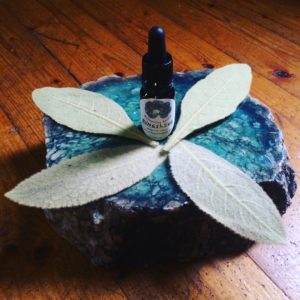
Mullein
Transforming what has turned hard soft again.
![]()
Mullein is an excellent remedy for the respiratory tract: lungs, throat and bronchi. The leaves are incredibly soft and it´s medicine is all about softening those things that have turned hard. This action exists on the physical level, as well as mental, emotional and spiritual. Physically, it moistens, softens, and lubricates irritated, dry and inflamed mucosal tissues, primarily in the lungs, and but also in the fluid spaces between the vertebrae (The Mullein-stalk looks like a spine) where the mucous is supposed to be fluid.
In the presence of excess heat there is a tendency to harden. Mullein softens this hardening and facilitates expectoration, easing inflammation and restoring the tone and secretions of the tissues.
![]()
The softening of what has turned hard aspect also works on the mental level. Mullein is good for people who are hard on themselves and overly critical in general.
Mullein stalks dipped in wax were used as ceremonial torches by druids. The torch-quality is a signature that Mullein is providing focus, enlightenment and grounding to those who feel they have lost their way or can’t see their path. They often feel in the dark and disjointed, and the confusion may cause tension and a sense of abandonment. Mullein is for those who hide their light under cover and those who need a strong backbone.
![]()
Herbalist Matthew Wood tells: “Mullein is for people who think too much and congest the mind, or suffer mental tightness following difficult projects. It gives such a person a feeling like the mind is opened up to breezes on a fresh spring day”
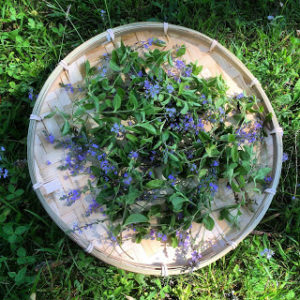
Speedwell
“I am most glad I loved thee—think of all
The suns that go to make one speedwell blue! – Oscar Wilde
![]()
Speedwell was highly regarded as THE herb for a speedy recovery in the times of the roman empire. It has since a hundred years ago been sort of forgotten in the world of healing.
It is primarly used for respiratory troubles, cough. It is an expectorant , it dispells mucus. Speedwell is also healing for ulcers, it enhances the regeneration of the gastric mucosa. It was famous for healing the lungs as well, and research is going on on this topic.
![]()
Maria Treben recommends it for nervousness caused by mental exhaustion. In my opinion it is grounding and brings a lightness at the same time, your chakras seem to align themselves from the bottom to the top. It contains the glycoside, scutellarin, named after our calming friend, Skullcap.
I have both Skullcap and Speedwell in my Stop Smoking Support.
![]()
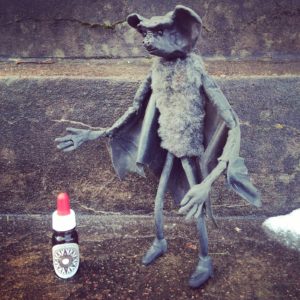
Traveler’s Elixir
“All journeys have secret destinations of which the traveler is unaware.” – Martin Buber
A spagyric formula for the traveler.
This ayurvedic formula supports flexibility, an open mind, digestion, the immune system, the respiratory tract, healthy sleeping patterns and the nervous system.
Supports the elimination of toxins that accumulate while traveling due to irregular eating and sleeping habits. Eases the effects of jet lag and helps the traveler to enjoy the travel as much as the final destination.
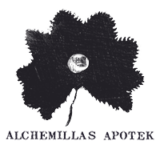
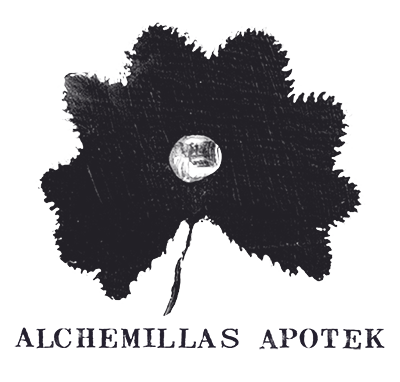

 English
English Svenska
Svenska